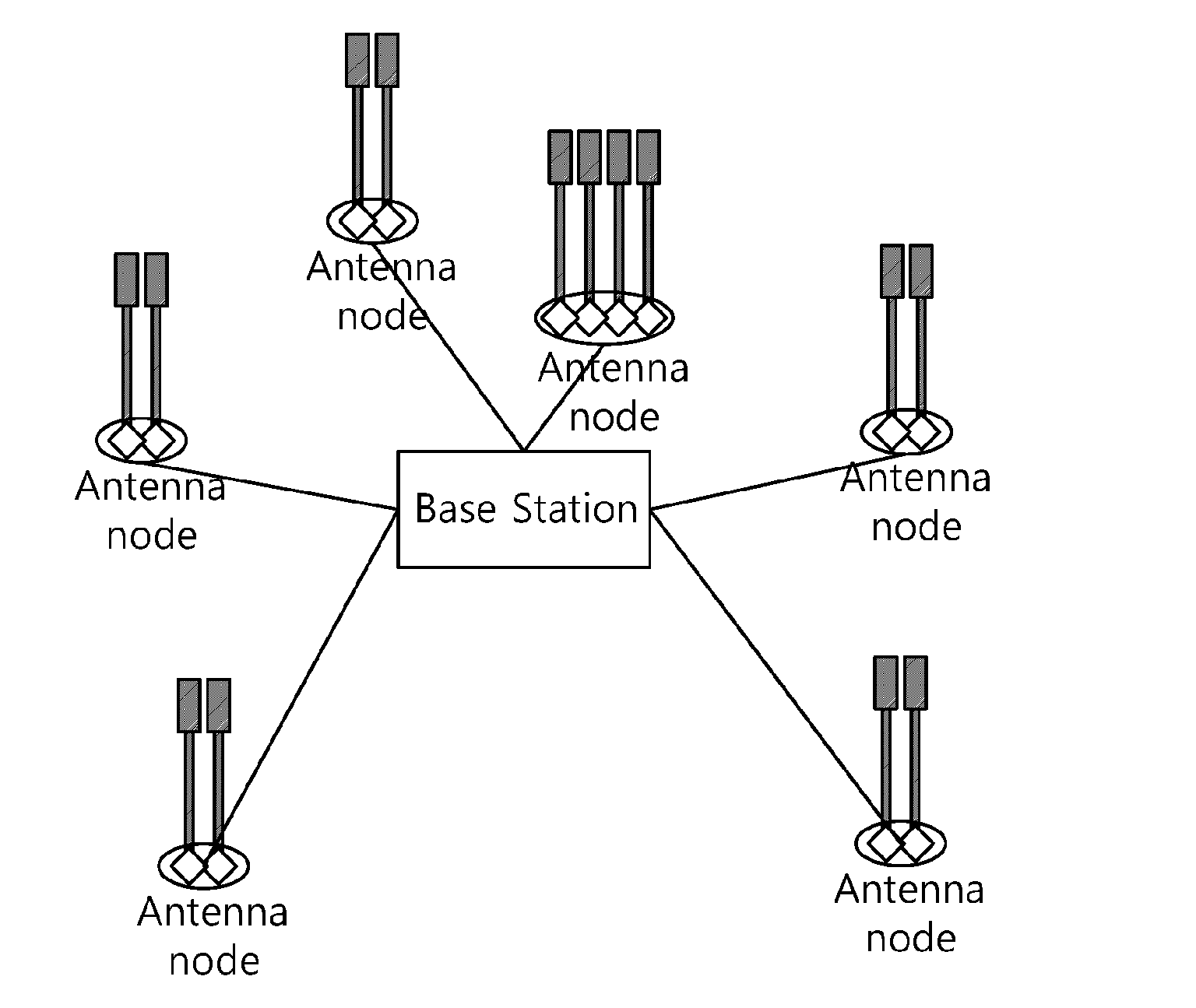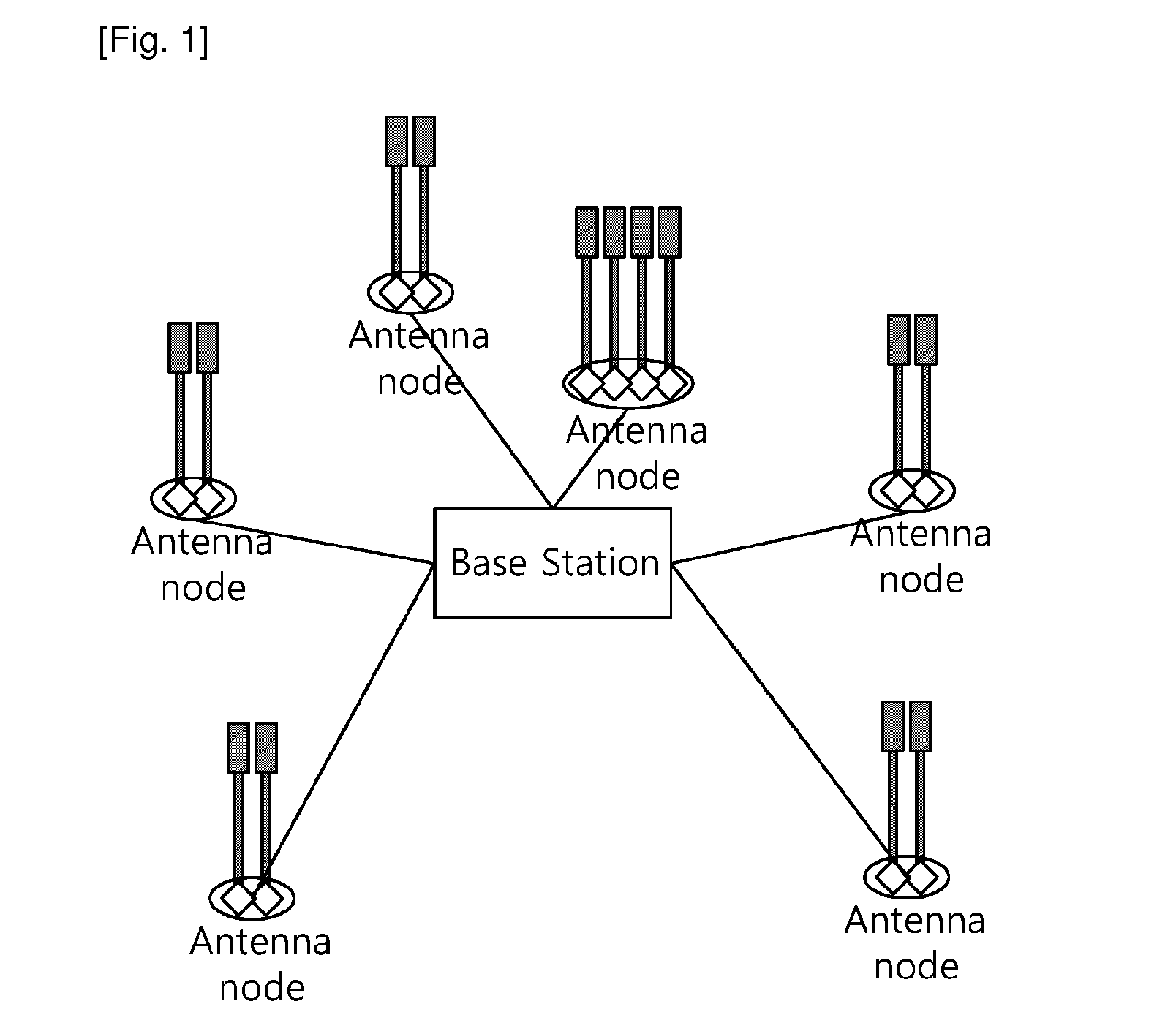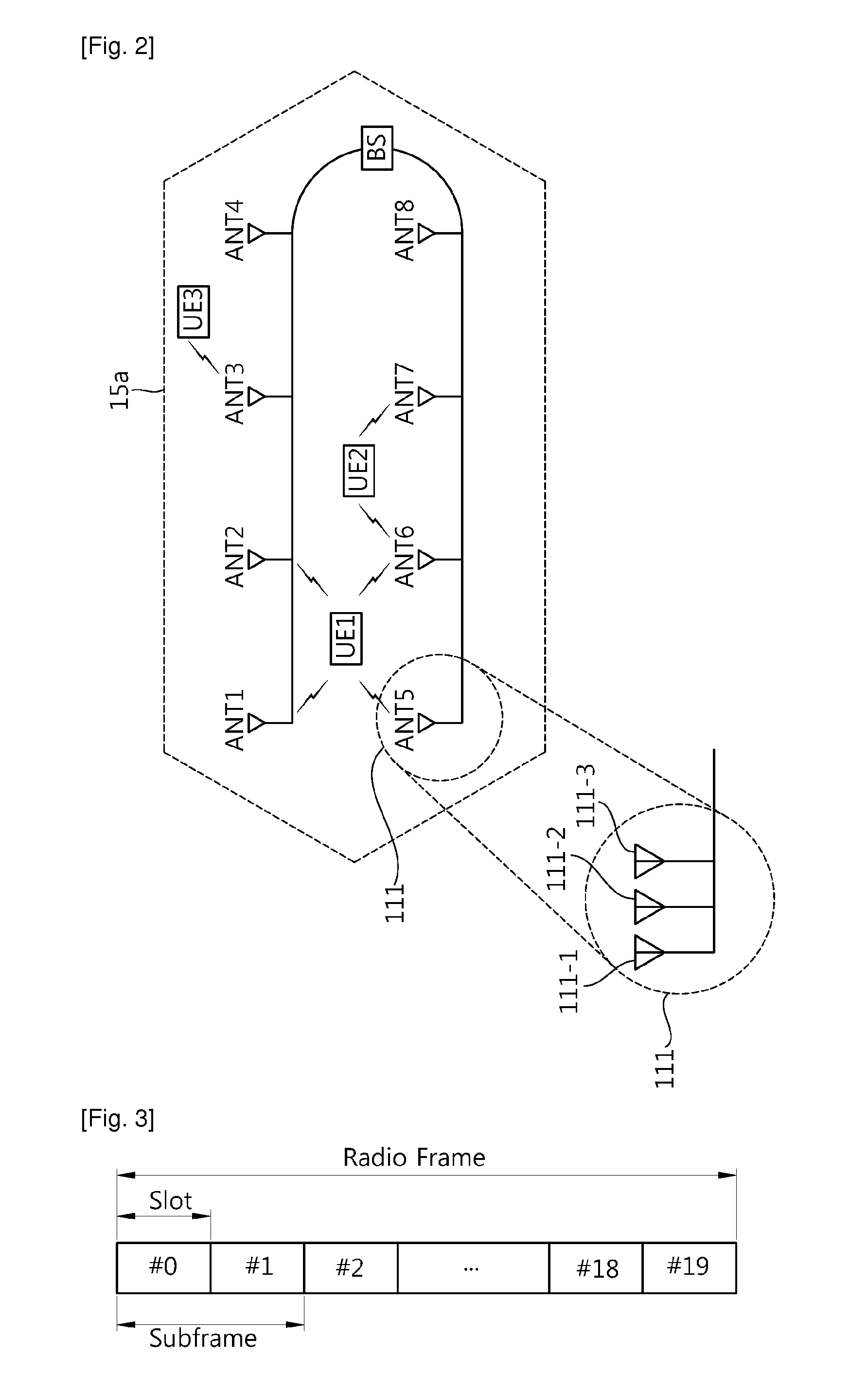Method and apparatus for receiving signal in multi-node system
a multi-node system and signal technology, applied in the field of wireless communication, can solve the problems of significant increase in signaling overhead, and achieve the effect of reducing the signaling overhead for reporting the transmission parameter of the virtual cell and reducing power consumption
- Summary
- Abstract
- Description
- Claims
- Application Information
AI Technical Summary
Benefits of technology
Problems solved by technology
Method used
Image
Examples
embodiment 1
Cell ID of Virtual Cell
[0125]It is assumed that virtual cell specific signals use different cell IDs. The total number of available cell IDs of a mother cell (referred to as a candidate) can be determined depending on a system. For example, in case of LTE, the number of candidates of the cell ID of the mother cell may be 504, and in case of IEEE 802.16, the number of candidates may be 768. If an information amount for expressing the cell ID is converted in a bit format, it is expressed by 9 bits in LTE and 10 bits in IEEE 802.16. In this case, if it is defined such that some bits of the cell ID of the virtual cell are equal to those of the cell ID of the mother cell, then an information amount for delivering the cell ID of the virtual cell is decreased.
[0126]For example, it can be defined such that a seed number that constitutes the cell ID in a synchronization signal transmitted by the virtual cell are partially identical to a seed number that constitutes the cell ID of the mother ...
embodiment 2
CSI-RS Configuration Information of Virtual Cell
[0138]A virtual cell specific signal may be a CSI-RS in LTE. A resource transmitted by using the CSI-RS can be determined by a CSI-RS configuration number and a CSI-RS subframe configuration number. A UE can know a resource element (RE) on which the CSI-RS is transmitted (mapped) in a subframe by the CSI-RS configuration number, and can know a period and offset, i.e., a CSI-RS transmission time (i.e., a subframe), according to which the CSI-RS is transmitted by using the CSI-RS subframe configuration number.
[0139]FIG. 13 and FIG. 14 show positions of all resource elements on which the CSI-RS can be transmitted in LTE and which are displayed on two consecutive resource blocks. That is, in FIG. 13 and FIG. 14, all resource elements corresponding to the CSI-RS subframe configuration number described in Table 1 (in case of a normal CP) and Table 2 (in case of an extended CP) are expressed on two consecutive resource blocks.
[0140]Referring ...
embodiment 3
Antenna Port Number of Virtual Cell
[0201]Hereinafter, a method of obtaining a virtual cell parameter by using a reference parameter will be described in a case where the virtual cell parameter is a CSI-RS antenna port number of a virtual cell.
[0202]With respect to a specific reference value i{1, 2, . . . , N}, a reference parameter that can be given by a BS is as follows: 1) CSI-RS configuration number #xi; 2) CSI-RS subframe configuration number #yi, and 3) Number of CSI-RS antenna ports Ni.
[0203]In this case, if a virtual cell index vu, (which is an integer satisfying ≧1) is in the range between
1+∑j=0i-1Njand∑j=0iNj
(where N0=0), then a virtual cell having an index vID can use a CSI-RS antenna port number expressed by Equation 16 below, while using the CSI-RS configuration number # xi and the CSI-RS subframe configuration number #yi.
14+vID-∑j=0i-1Nj[Equation16]
[0204]In this method, a CSI-RS antenna port number used by the virtual cell is given by sequentially increasing it one by o...
PUM
 Login to View More
Login to View More Abstract
Description
Claims
Application Information
 Login to View More
Login to View More - R&D
- Intellectual Property
- Life Sciences
- Materials
- Tech Scout
- Unparalleled Data Quality
- Higher Quality Content
- 60% Fewer Hallucinations
Browse by: Latest US Patents, China's latest patents, Technical Efficacy Thesaurus, Application Domain, Technology Topic, Popular Technical Reports.
© 2025 PatSnap. All rights reserved.Legal|Privacy policy|Modern Slavery Act Transparency Statement|Sitemap|About US| Contact US: help@patsnap.com



